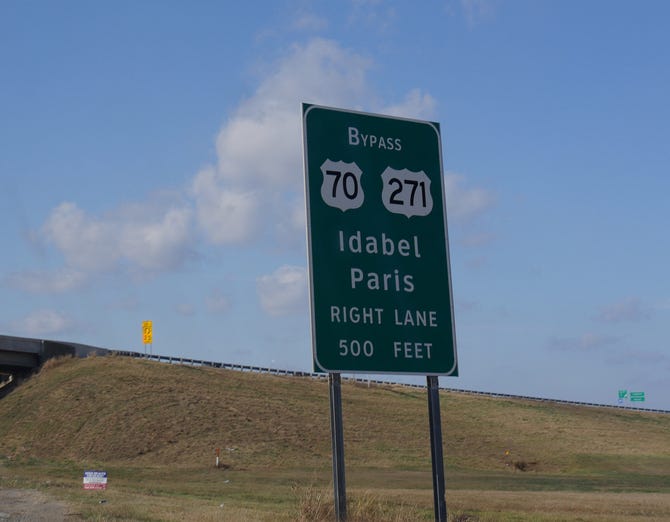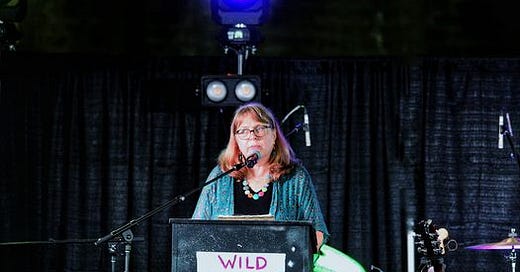

Discover more from The Cottage
There might be no aphorism more often repeated than “Those who cannot remember the past are condemned to repeat it,” a remark by George Santayana, a late nineteenth-century Harvard philosopher. Skeptical of such patterns in history, Mark Twain was said to have added: “History doesn’t repeat itself, but it does rhyme.”
Last weekend, a local newspaper in McCurtain County, Oklahoma released recordings of an after-hours meeting of community leaders — including a county commissioner and the sheriff — wondering if they could hire a hit man to kill a journalist and jonesing for the days when troublemakers could be whipped and lynched.
Fallout has been swift — two of those on the recording have been suspended from the state sheriffs’ association and a third has resigned as country commissioner. With the three offenders removed, it is easy to imagine that the problem will now go away and the negative national attention will fade.
I’d never heard of McCurtain County, a sparsely populated rural area in part of Oklahoma known as “Little Dixie.” The county seat is Idabel, a city of about 7,000 residents, and the county borders both Texas and Arkansas.
Before Oklahoma became a state in 1907, this region was part of the Choctaw nation, with an incredibly diverse population of tribal citizens, people formerly enslaved by the Choctaws (often mixed-race), freed Black immigrants from other parts of the South, and new white settlers claiming reallotted Indian lands as homesteads. The changes in government policies and the pressure for Oklahoma statehood created explosive racial tensions.
The Equal Justice Initiative has documented 75 racial terror lynchings in Oklahoma, the highest number in any state outside of the South. The EJI reports that most of those lynchings happened in the southernmost parts of the state, and three of them occurred in McCurtain County between 1910 - 1916: an unnamed man, Thad Brown, and Oscar Martin. All three lynchings happened with some sort of official complicity. The unnamed victim was taken from a jail and hanged, and Thad Brown was attacked and killed while being transported by a sheriff’s deputy.
Perhaps worst case was that of Oscar Martin in April 1916. Accused of rape, a mob of 500 white people disrupted his trial in Idabel, took over the courthouse, and seized Martin. They didn’t even bother to take him anywhere to execute him. They put a rope around his neck and shoved him from a platform outside of the second floor courtroom, murdering him before the trial had even begun deliberations. A newspaper reported:
Oscar Martin, a negro, was lynched in the courtroom here today. Martin was having his preliminary hearing. A number of men quietly disarmed the officers and seised the negro. A rope was tied around his neck, fastened to a projection and he was shoved from a platform. One of the mob shot him twice. The crowd dispersed at once. No arrests were made.
“No arrests were made.”
An arrest was made, however, in a different case more than six decades later. In January 1980, a group of Black teenaged boys snuck into the parking lot of the Black Hat, an all-white club in Idabel. They were chased by an armed Arkansas man, Tony DeShazo. One 15-year old, Henry Lee Johnson, was shot and killed. By the time Johnson’s body was found the next morning, the Black community had heard that Johnson wasn’t just shot, but that he had also been beaten and lynched (there does not appear to be any remaining evidence to prove this claim). But the episode sparked riots — and two more people were killed.
DeShazo confessed to the murder — and that’s where the story takes a truly strange turn. The judge in the case reduced the charges and wouldn’t allow the confession in court. DeShazo, from a well-heeled family, was defended by a sitting Oklahoma state senator, Gene Stipe. The case turned on the testimony of a 13-year old girl who had been DeShazo’s “companion” in his van during the parking lot incident. During the trial, the girl was pregnant — although she denied she’d ever had relations with DeShazo — and basically claimed he was protecting her from “someone” whom she believed to be threatening. Tony DeShazo was acquitted of the murder — to which he had confessed — in January 1981. No other suspect has been named; no other charges have ever been brought.
In other words, McCurtain County has a history of this kind of thing — official complicity with violence. When a sheriff and a county commissioner talked about hitmen and hanging, they weren’t joking. They were waxing nostalgic.
I don’t know if history repeats itself or if it rhymes. But I do know that the past hangs on for a long time into the present. Events of long ago imprint themselves on places and in people’s memories. Secrets haunt communities, often returning to the surface in unexpected ways. Unfinished stories linger, fueling rumors and gossip, and past injustices continue to foster suspicions and break trust between people. History remains well after those who made it are gone. Maybe history isn’t a pattern — and it isn’t a poem — but perhaps it is a kind of communal DNA, a coding of past moral choices and former events that only turns malignant under certain circumstances.
But, even though the genes are there, it doesn’t have to be that way. There are things you can do to lessen your chance of disease, to avail yourself of treatment, to even heal some illness from which your ancestors died.
And that’s one of the reasons history is so important right now. If we don’t know, for instance, that McCurtain County has a deep history of racial violence, lynching, and official corruption, then we might think the recent episode involves three bad individuals. The problem could be solved by censure or resignation.
If you understand this as one more act in a longer history of power, land, and race, then different choices present themselves. Maybe you want to cover up things that happened in the past because they’d be bad for business, bad for development, bad for your image. Surely, you don’t want honest historians. A good PR firm would be a better choice.
You could also embrace the idea that the past is predestined — recycling patterns that we really can’t do much about except recognize when the wheel of the past turns again. What goes around, comes around. Repeat or rhyme, it doesn’t much matter. Things will change again soon enough. Everything will take care of itself.
However, if we recognize that the past encodes itself on places and people, we might choose a different path to the future. Knowing what happened around 1910 and 1980 can build moral muscle in a community — and give rising generations a chance to make better decisions about policies, politics, laws, and their own personal lives. Do you really want to be in the same photo as your ancestors smiling at a brutalized body hanging from a tree? Would you like to be remembered as a judge who let off a murderer? Do you want to be caught on tape laughing about killing a journalist? Apparently, the answer is yes — in McCurtain County — if you don’t know or care about honest history.
Until it is no. Until history demands accountability. Until somebody says — no more, not me, not my children. We don’t have to live like this any longer.
And then things can change. But you have to know what needs to be changed — the systems, structures, and stories of sin that surround us, the past evils we may breathe in without any awareness — before you can resist the pull of buried history.
Those who don’t know history are forced into complicity with the past. Those who do know history can find liberation from its worst secrets. And thus freed, we have the power to make a better future for generations yet to be born.
INSPIRATION
His spirit in smoke ascended to high heaven.
His father, by the cruelest way of pain,
Had bidden him to his bosom once again;
The awful sin remained still unforgiven.
All night a bright and solitary star
(Perchance the one that ever guided him,
Yet gave him up at last to Fate's wild whim)
Hung pitifully o'er the swinging char.
Day dawned, and soon the mixed crowds came to view
The ghastly body swaying in the sun:
The women thronged to look, but never a one
Showed sorrow in her eyes of steely blue;
And little lads, lynchers that were to be,
Danced round the dreadful thing in fiendish glee.
— Claude McKay, “The Lynching”
I don't know if history repeats itself
But I do know that you don't.
I remember that city was divided
Not only between Jews and Arabs,
But Between me and you,
When we were there together.
We made ourselves a womb of dangers
We built ourselves a house of deadening wars
Like men of far north
Who build themselves a safe warm house of deadening ice.
The city has been reunited
But we haven't been there together.
By now I know
That History doesn't repeat itself,
As I always knew that you wouldn't.
— Yehuda Amichai
These are outsiders, always. These stars—
these iron inklings of an Irish January,
whose light happened
thousands of years before
our pain did; they are, they have always been
outside history.
They keep their distance. Under them remains
a place where you found
you were human, and
a landscape in which you know you are mortal.
And a time to choose between them.
I have chosen:
out of myth in history I move to be
part of that ordeal
who darkness is
only now reaching me from those fields,
those rivers, those roads clotted as
firmaments with the dead.
How slowly they die
as we kneel beside them, whisper in their ear.
And we are too late. We are always too late.
— Eavan Boland, “Outside History”
PAID SUBSCRIBERS — LIVE ZOOM on THURSDAY, APRIL 20 at 4PM Eastern/1PM Pacific
Mark your calendars! Don’t worry if you can’t make it. A recording will be sent out to the entire paid list after the live event.
LOOK FOR THE LINK IN YOUR EMAIL OR ON THE APP THURSDAY MORNING
Our guest is James D. Richardson, author of The Abolitionist’s Journal: Memories of an American Antislavery Family. Finding his a family journal lead him to trace the life of his ancestor, George Richardson, a white clergyman, along the Underground Railroad, as the chaplain to a Black unit in the Civil War, to being the founder of a Black college. The book tells a history of what some white families did to stand for justice and equality — as well as how the past has a continuing life into the present.
Jim was formerly a journalist and editor — and then an Episcopal priest. Most recently, he was Dean of the Cathedral in Sacramento, California.
PUPDATE
Padraig on a walk. He’ll be four months old on April 22.


















Dear Diana, your article strikes me as historically significant. You have drawn so many pertinent images together. Your clarity about the rhyming of history, nostalgia, history coming around again, (and perhaps even smelling the same), names and gives flesh to the syndrome, thus allowing us to work on permanently burying the ghouls and creating a future free of the monstrous past.
William Faulkner: “The past is never dead. It’s not even past.”